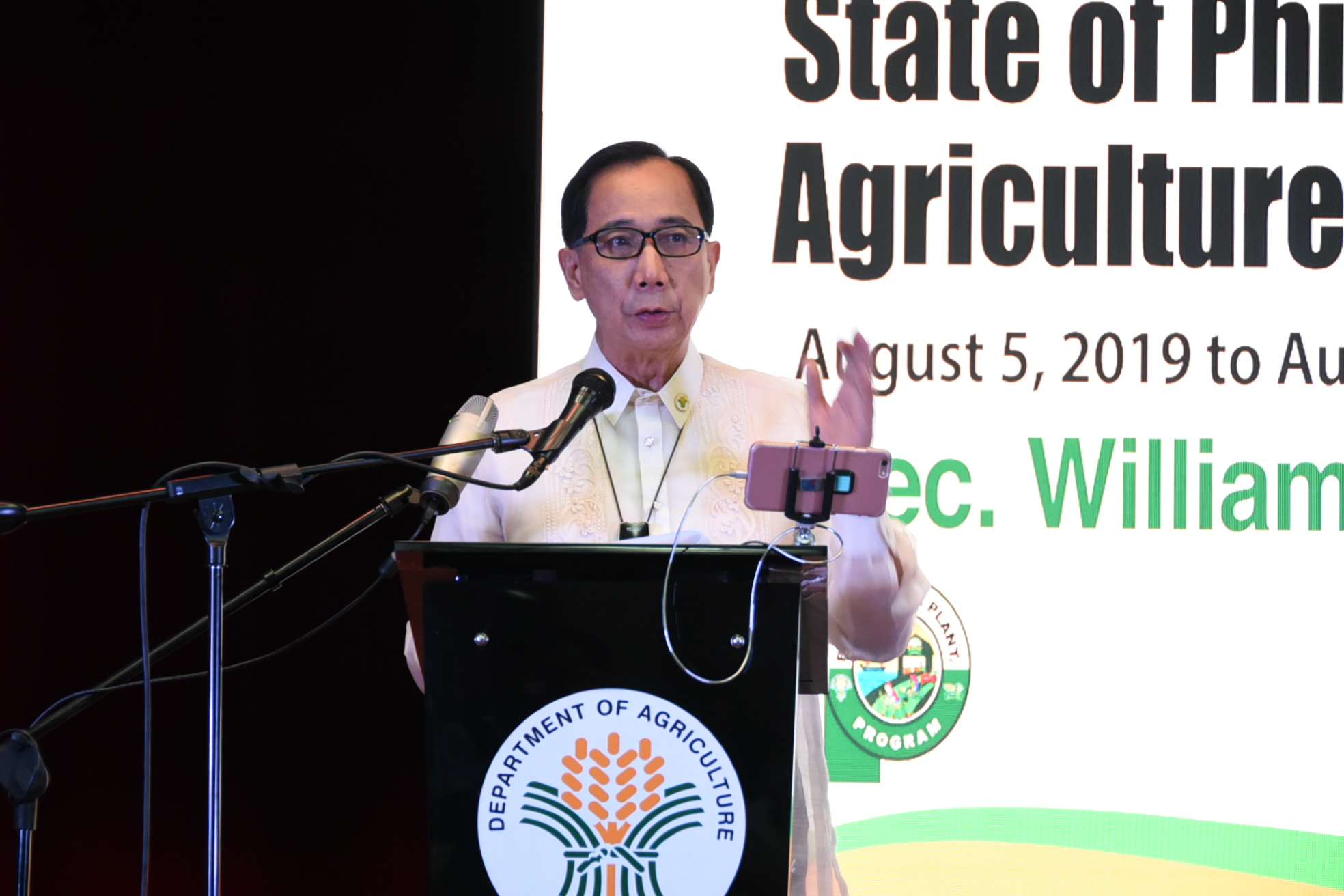
The Department of Agriculture, led by Secretary William D. Dar, is taking on the challenge posed by Finance Secretary Carlos G. Dominguez, to exert all efforts to enable the country’s agriculture sector to grow by at least 2 percent (%) per year.
“This is a tall order set by our mentor, and staunch friend and supporter Secretary Dominguez, but we accept his challenge. He has been instrumental in paving the way for the Department to shine, especially as the Philippines faces one of its biggest threats, the Covid-19 pandemic,” said the agriculture chief.
Secretary Dar has initially set a target for the agriculture sector this year at 1.5% growth, as the Philippine Statistics Authority (PSA) reported that the farm sector grew by 0.5% during the second quarter of the year.
Dominguez posed the challenge before the “State of Philippine Agriculture Report” made by Dar to commemorate his first year of service as DA chief, on August 5, 2020.
The finance chief said: “the DA (must) fulfill a 2-percent annual growth target for the agriculture sector to keep it ahead of the country’s population expansion rate, which was estimated at 1.4 percent in 2019 by the Philippine Statistics Authority.”
Dominguez, who served as DA secretary during the term of President Corazon C. Aquino, also suggested five ways to guarantee the adequate supply of most basic crops that Filipinos need:
- Extending productivity gains in the rice sector to other plantation crops, particularly sugar;
- Digitalizing agricultural systems;
- Expanding access to digital marketing to boost consumer spending;
- Mechanizing farm production; and
- Improving the DA’s efficiency in program delivery.
“With (Secretary Dar’s) capable and systematic handling of these and other significant issues, we face the COVID-19 pandemic with renewed strength on the food security front,” said Dominguez in his speech.
During Secretary Dar’s first year as the agriculture chief of the Duterte administration, he faced a myriad of challenges, ranging from the outbreak of the African Swine Fever (ASF), high prices of rice, low farmgate prices of palay and copra, crop damage due to typhoons, eruption of Taal Volcano, and finally, the COVID-19 pandemic.
The department expects crops, led by palay and corn, fisheries and poultry production to bring in the positive numbers to achieve the 2% annual growth target.
The livestock sector, particularly hog raising, may not be able to deliver as the industry is still reeling from the effects of the dreaded African Swine Fever (ASF). Timely imposition of biosecurity measures, however, has decreased the negative effects of this highly contagious disease to hogs.
According to PSA figures, the agriculture sector grew by 0.6% in 2018 and 0.7% in 2019.
“I am counting on the Filipinos’ strong resilience and resolve to rise above any adversity. We will continue to build on the strong foundation in partnership with the local government units, private sector, farmers’ and fishers’ groups, and the academe to catapult the entire agriculture sector this year and beyond,” Dar said. ### (DA StratComms)













